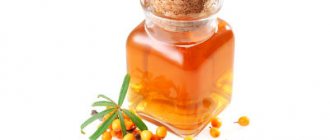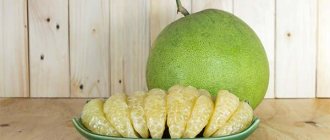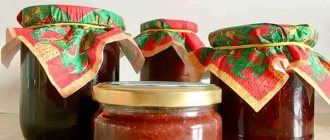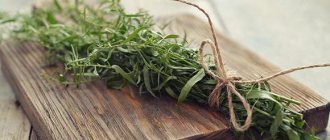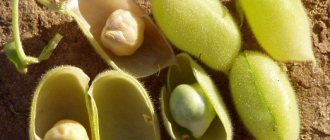Thorn or prickly plum (Prunus spinosa)
Thorn is quite widely found in the wild in the European part of Russia, Siberia, and the Caucasus. Its fruits have been eaten since ancient times. Sloe bones were found during excavations of ancient human sites in the Swiss Alps, as well as in the stomach of a 5,300-year-old mummy discovered in 1991 in the Ötztal Alps.
Thorny thorn
blackthorn, goat berry, black thorn, oat plum
The benefits of thorns lie not only in the tasty fruits. Roots, bark, young shoots, as well as leaves and flowers are used for medicinal purposes. A large number of therapeutic properties of the plant are known, including anti-inflammatory, disinfectant, astringent, diuretic, and laxative. In addition, thorns can be used to fortify and strengthen the immune system before the cold season.
Name in Latin: Prunus spinosa Name in English: Blackthorn Family: Roses - Rosaceae
Blackthorn is not so easy to collect - the entire plant is densely covered with tenacious spines. But the medicinal value encourages traditional healers and representatives of official medicine to harvest thorn raw materials no matter what, because the harm of thorns lies only in its “prickliness”.
General characteristics of the plant
Blackthorn is a spreading, thorny shrub with plum-colored drupes, which is why one of the popular names of the plant is prickly plum.
Botanical description
The root shoot plant can grow in the form of a tall tree, up to 6 m tall, or in the form of a bush. The thorn bush has a main trunk and a highly branched voluminous crown, reaching a height of 3 m.
- Roots. The plant is anchored in the soil by a powerful root system with fleshy rhizomes and lateral roots, which provide the thorn with a sufficient amount of moisture.
- Stems. Stem wood is particularly durable. The main trunk is covered with brown or dark brown bark. It is erect and highly branched. On the surface of the trunk and branches of the thorn there are many prickly thorns. One-year-old young shoots often emerge from the rhizomes of thorns, which are localized around the trunk and form a kind of thicket. Their surface is velvety to the touch due to dense pubescence. The shoots end with a thorn.
- Leaves. They are regularly replaced with young ones as the plant matures. Wedge-shaped at the base, they have a pointed apex. The shape of the leaf blade is obovate or elliptical. Each leaf sits on a branch on a medium-length petiole. The edge of the leaf plate resembles sharp saw teeth. A characteristic feature is the blooming of leaves as the flowers fade.
- Flowers. They have a very delicate, white-pink color. They emit a subtle, pleasant aroma that attracts bees well, which makes sloe an excellent honey plant. Flowering begins early - in April, and can last until mid-May. Blackthorn thickets bloom en masse, attracting insects. The flowers are arranged on the branches so densely that it seems as if the entire bush is covered with a white tablecloth.
- Fruit. They are attached to thorn branches using medium-length stalks. The fruit is a drupe, distinguished by juicy pulp, strongly associated with the seed. The green flesh of the fruit has a sweet-sour taste and astringency, which disappears soon after the first frost. The fruit itself is small, its diameter can reach 1.5 cm. The fruits are dark blue in color and densely covered with a waxy bluish coating.
Interestingly, the ripe fruits are attached to the branches so tightly that they can remain until next spring. From an adult bush you can collect up to 4 kg of fruit.
Habitat
Sloe thickets consist of small bushes. When the plant develops singly, it forms a voluminous tall bush. Often blackthorn can be found on the side of the road, on a sunny forest edge or in a wasteland. Thickets form in ravines and on slopes, as well as in ravines. Sloes develop especially well in soil rich in lime salts.
The growing area of the sloe is the European continent, Asia Minor, and North Africa. Often found in Ukraine, Belarus, Moldova, Kazakhstan. On the territory of Russia, it actively grows in the European part, as well as in the North of Siberia.
Procurement of raw materials
The saturation of the plant with useful substances makes it possible for all its parts to be used for medicinal purposes. Sloes are harvested in stages for the winter.
- Harvesting bark. Begins in early spring - in March. The bark is cut in slices from the main trunk and adult branches. The area of the cuts should be small to quickly heal the damage. Do not damage the wood with a knife, so as not to destroy the plant. The thorn bark is laid out in the sun in the open air or dried using a dryer at a temperature of about 60 ° C.
- Preparation of flowers. It begins in mid-April - the period of budding or the beginning of flowering. The inflorescences are carefully cut or torn off and laid out under diffused sunlight on a fabric or paper tray. Dry, turning the raw materials regularly.
- Preparation of leaves. It begins after the plant has completely flowered, when all the flowers have already withered and the leaves have bloomed well. It is advisable to collect the largest leaves and dry them under a canopy in the open air or in a dryer.
- Harvesting young shoots. They are collected in the middle and end of June, since it is then that the greatest concentration of useful substances is concentrated in the shoots. Young shoots are tied into panicles and hung in diffused sunlight or in a shaded place in the open air. You can spread the raw materials in a thin layer on a tray or dry them in an oven or dryer.
- Fruit harvesting begins in September, when the still greenish fruits contain a large amount of tannins. Sloe harvesting continues until mid-October. It is at this time that pleasant-tasting berries are collected, ideal for making desserts and jams, as well as broad-spectrum medicines. A certain part of the tannins remains in the fruits even after frost.
- Harvesting roots. Starts in late autumn. It is advisable to carry out harvesting among artificial or naturally growing thickets, since it is there that the restoration of the number of plant individuals occurs quickly. Dig up the roots, wash them with running cold water, dry them in the sun and dry them in an oven or electric oven.
To obtain fresh fruit in winter, you can freeze sloe. To do this, the berries are sorted, washed with clean water, and dried to remove moisture. After this, the fruits are laid out on a wide tray in one layer and placed in the freezer for a couple of hours. The berries are poured into a bag or plastic container.
Frozen fruits can be stored for no more than six months. Dried fruits, leaves, inflorescences, shoots are stored for a year in a well-ventilated dark place, packed in paper or fabric bags. The bark and roots can be stored for up to three years.
Features of preparing compote
Making thorn compote for the winter is quite easy. But for long-term storage it is important to follow some rules:
On this topic:
Compote of chokeberry and red rowan for the winter
Feb 14, 2017
Assorted sweet compotes for the winter
Feb 14, 2017
BACK FORWARD 1 of 20
- First of all, the thorns need to be carefully sorted, removing wormy, rotten, dented, moldy and cracked fruits. If they get into the damson compote, they will definitely ruin it. It is also necessary to remove the stalks at the same time.
- Rinse the sloe berries well using running water, paying attention to each fruit. Then they need to be dried on a towel or napkin.
- Prepare jars of the required size, wash them using soda or mustard powder. Then sterilize by steam or in the oven and dry.
- It is important to seal the sloe drink hermetically. To do this, you need to prepare screw metal caps or those designed for sealing with a key. They can also be sterilized in boiling water for five minutes.
Why are berries valuable...
All parts of the sloe are rich in tannins, which have a number of therapeutic properties.
- Astringent effect. Manifested by the ability of the tannins of thorn fruits to form albuminates - special proteins of a dense structure - with the proteins of the skin and mucous membranes. A film of albuminates protects damaged areas of the epithelium from mechanical and chemical irritation.
- Healing effect. Under the influence of tannins, irritation of damaged areas is reduced, this accelerates the rate of epithelization.
- Antimicrobial action. The tannins of sloe fruits have bacteriostatic and fungistatic properties, that is, they eliminate bacterial and fungal infections and prevent their development in the area of skin damage.
- Anti-exudative effect. Thorn reduces the production of exudate in the damaged area, dries out weeping wounds and ulcers.
- Anti-inflammatory effect. It lies in the ability of thorns to reduce the production of prostaglandins and leukotrienes - the main mediators of inflammation that provoke hyperemia and swelling of inflamed tissues.
In addition to tannins, thorn fruits contain a lot of other useful components.
- Sahara. Easily digestible types of carbohydrates are a good support for the body during loss of strength, after illness. Sugars are a source of glucose for all tissues of the body, which means they serve for its proper functioning.
- Organic acids. They have antioxidant properties. Gently stimulate peristalsis and have a diaphoretic and diuretic effect. They have an antiparasitic effect.
- Pectins. Adsorb toxins, heavy metal salts, food processing products, and bacterial activity. Eliminate dysbacteriosis, promoting a preponderance of the ratio of normal and pathogenic microflora towards beneficial bacteria.
- Vitamins. Represented by vitamins C, P, K, PP, B2. They have a general strengthening effect on the condition of the body. Improve metabolism. Helps normalize hematopoietic function.
- Minerals. Calcium, potassium, iron, phosphorus. Necessary for normal electrolyte metabolism. Participants in enzymatic reactions and important physiological processes. They are especially needed for the normal condition of bone tissue, conduction of nerve impulses, and improvement of cellular respiration processes.
Sloe jam - a tasty and healthy delicacy
Few people eat sloe fresh, as it has a specific sourish and rather tart taste. But these fruits can make delicious jam! Find out how to cook it!
Which turn is right?
To make the jam thick and sweet, you need to choose only ripe thorns, and even slightly overripe ones, since they are softer, sweeter and not so astringent. In any case, it is worth selecting only good berries: without areas of rotting, without spots and without holes (worms penetrate into the pulp through them, and they will definitely be superfluous in the jam).
How to make jam?
There are several ways to do this.
Method one
This recipe is very simple. To prepare you will need:
- 1 kg of sloe;
- 1 kg sugar;
- 1.5 glasses of water.
Preparation:
- The thorns need to be washed and dried. If desired, remove the pits.
- Next, prepare the syrup. To do this, dissolve sugar in water, bring the mixture to a boil and cook a little until thickened.
- Pour the syrup over the sloe and leave for a day so that the fruits are soaked and release their juice.
- Place the container on the fire and cook the jam until it thickens. This will take about an hour.
Method two
You can make delicious thorn jam, similar to jam.
List of required ingredients:
- 1 kg of sloe;
- 1.2 kg sugar;
- glass of water.
Step-by-step instruction:
- Wash the sloe, dry it, add half the available water and cook for two to three minutes. Then transfer it to a sieve and puree to form a thick puree.
- There will be pulp left on the bones, so fill them with the remaining water, cook for a couple of minutes and wipe again (and later they can be used for cooking compote).
- Now add sugar to the prepared sloe puree, put the mixture on the fire and cook for about 20 minutes, then roll into jars. This jam will be smooth and very tasty!
Method three
If you decide to use this recipe, you will need:
- 2.5 g thorns;
- 3 kg sugar;
- 1 liter of water.
Description of the cooking process:
- Rinse and dry the berries well, cover them with warm water and cook until they are soft enough.
- Place the fruits in a colander and strain the broth; you will use it later.
- When the berries have dried and cooled a little, remove the seeds from them, and then return them to the pan with the broth, add sugar there.
- Cook the jam for about 15 or 20 minutes.
Method four
To preserve maximum nutrients, try making jam according to this recipe. You will need:
- 1 kg of sloe;
- 500 ml water;
- 1.3 kg sugar.
Preparation:
- First, heat the water and pour it over the sloe for an hour (you need to wash it well first).
- Remove the seeds from the softened berries, cover them with sugar and leave for two hours so that they release the juice.
- Next, put the container on the fire and cook the jam until the sloe becomes completely soft.
Benefit
What are the benefits of sloe jam? It contains vitamins C, E and group B, coumarins, tannins, catechins, alcohols, flavonoids, essential oils, fructose, steroids, pectin, organic acids and so on. Thorn helps to normalize metabolic processes, improve digestion and cleanse the intestines, get rid of constipation, and eliminate swelling.
It has diaphoretic, antipyretic, anti-inflammatory and tonic effects. In general, this is just a storehouse of useful substances! But it is worth remembering that some of them are destroyed during heat treatment.
Adviсe
Recommendations for housewives:
- To make the taste softer and the fruits juicier, you can soak the sloe in cool water for half an hour or an hour.
- To ensure that all the fruits are well saturated with syrup and softened during the cooking process, first pierce them with a fork or toothpick in several places.
- The seeds can be removed or left. But seedless jam usually turns out tastier, because the separated fruits are better soaked in syrup and become sweeter and more tender.
- To make the jam thicker and richer, cook it longer, then the excess liquid will evaporate and the syrup will thicken.
- It is easiest to remove seeds from heat-treated berries, so blanch them first or cook them for two to three minutes so that the pulp is better separated.
- Remember that the less you cook the sloe, the more beneficial properties it retains.
- To get tasty and sweet jam, you can increase the amount of sugar. In any case, you should not feel sorry for it, since the thorn is quite sour.
Now you know that sloe can make tasty and healthy jam. Moreover, you can cook it at home!
... leaves, flowers, bark and roots
Sloe leaves, in addition to tannins, contain bitterness, flavonoids, and phytoncides. This gives them beneficial properties for health:
- anti-inflammatory;
- antibacterial;
- antioxidant;
- antiplatelet;
- vozoprotective;
- cardiac stimulant;
- secretory.
The chemical composition of thorn flowers has not been thoroughly studied. It is known that the glycoside amygdalin contained in it is in low concentrations, and therefore has therapeutic properties:
- diuretic;
- laxative;
- diaphoretic;
- expectorant;
- antispasmodic;
- antibacterial.
The bark and roots of thorns are saturated with tannins, and therefore are actively used as an antidiarrheal agent.
The glycoside amygdalin is found in high concentrations in the thorn seed. It should not be swallowed due to the toxicity of the substance mentioned. Amygdalin breaks down in the body to form poison - hydrocyanic acid.
Benefits of Turns
Sloe flowers and leaves are actively used in folk medicine as a diuretic for various intoxications and swelling of the heart or kidneys. The beneficial effect of thorn leaves on blood vessels helps combat capillary fragility and varicose veins. Indications for the use of sloe for vascular pathologies are expanding to vasculitis, due to its anti-inflammatory properties.
The diaphoretic properties of thorn fruits are useful for feverish conditions, and the antibacterial properties are useful for inflammatory and infectious skin diseases. In addition, it is known that preparations from thorn flowers can eliminate nausea.
Improving metabolism when using sloe helps alleviate the patient's condition with gout, since the plant is able to remove salt deposits from the body. The hypoglycemic effect of berries makes it possible to use them for diabetes.
The roots and bark of thorns exhibit the following therapeutic properties:
- astringents;
- anti-inflammatory;
- antibacterial;
- antiparasitic;
- healing.
Medicinal preparations of the root and bark are used for diarrhea, as a strengthening agent, as well as for colitis of various origins, to restore and optimize intestinal function.
Impact on the body
The rich chemical composition of the fruits determines their widespread use for medicinal purposes.
- For the gastrointestinal tract. Sloe fruits and preparations made from them stimulate the digestion of food, increase appetite, improve the secretion of enzymes and gastric juice, ensuring good digestion. The antiparasitic effect of the juice helps get rid of helminths and toxic products of their vital activity. The anti-inflammatory effect of sloe works well for nonspecific ulcerative colitis, gastritis, and pancreatitis. Thorn normalizes digestion and gently eliminates chronic constipation. The low calorie content and beneficial effect of the plant on metabolism allows the use of thorns for weight loss.
- For blood. Sloes contain a large amount of vitamins and minerals, including iron, which ensures the synthesis of hemoglobin. Thorn has an antianemic effect, normalizes the biochemical composition of the blood, and improves the process of saturating it with oxygen. In addition, thorns normalize blood pressure. The diuretic effect, which manifests itself as a result of stimulation of the kidneys, leads to an improvement in their detoxification function and blood purification.
- For skin. The astringent, antibacterial and anti-inflammatory properties of thorns make it possible to eliminate purulent skin diseases: infected wounds, trophic ulcers, pustular rashes.
- For the lungs. Sloe preparations help get rid of cough, inflammation of the respiratory tract, normalize the functioning of the ciliated epithelium of the bronchi, and prevent stagnation of secretions.
Sloes are also given anti-allergic properties due to their detoxifying properties. Interestingly, most of the therapeutic effects of thorns are not accompanied by side effects. It is for this reason that contraindications for sloe include only individual hypersensitivity reactions. But the use of sloe during breastfeeding and pregnancy must be agreed with your doctor.
Recipes for thorn compote for the winter
An unusually tasty compote of thorn fruits for the winter is prepared by sterilization and several pouring methods.
Recipe without sterilization
To prepare thorn compote without sterilization you need:
- Fill the jar one third full with thorn fruits.
- Pour boiling water into the jar to the top of the neck, cover with a clean lid and leave for 15-20 minutes.
- At this time, you need to measure out 375 g of sugar.
- When the compote has settled, put a lid with a mesh on the jar and pour the liquid into a pan with granulated sugar.
- Place the pan on the stove and wait until it boils; to better dissolve the sugar, it is recommended to stir the syrup.
- Pour boiling syrup into a jar using a wide funnel, immediately cover with a sterile lid and roll up.
- After rolling, turn the jar over and cover it with a blanket so that cooling is slow.
On this topic:
Rich apple compote for the winter
Cherry compote for the winter - an intoxicating vitamin elixir
Aroma of summer or yellow plum compote
Recipes for plum compote with pits for the winter
BACK FORWARD 1 of 11
After a day, it is necessary to check the tightness of the closure of the compote; if even a little liquid is released, then it is not recommended to leave such a jar for a long time. After another two days, you need to see if the drink has become cloudy; if it is clear, you can safely put it away for long-term storage.
The taste of thorn compote for the winter, which is prepared without sterilization, is practically no different from the taste of the drink made according to the classic recipe. A significant advantage is that it takes less time to prepare. Before use, if it seems too cloying, you can dilute it with water.
Traditional recipe for thorn compote for the winter with sterilization
Procurement process:
- Boil 2.5 liters of water, pour 0.5 kg of sugar into it and stir until completely dissolved.
- Place 1 kg of pure sloe in a colander and lower into boiling syrup, hold the berries for 5-7 minutes.
- Pour the blanched fruits into a prepared three-liter jar and fill it with syrup to the very top, then cover the jar with the prepared lid.
- Place a cloth on the bottom of the pan, place a jar on it, fill with water to the level of the “hangers”.
- Set the pan over low heat and sterilize the jar for 15 minutes after boiling.
- Then you need to remove the jar from the pan and seal it with a lid, place it upside down, wrap it up and leave it for a day. Then you can put the compote into storage.
According to this recipe, it is possible to prepare compote without fruits; to do this, blanch the berries in syrup for longer - 10-15 minutes. The rest of the cooking technology will be the same.
Recipe for thorn and apple compote for the winter
The process of preparing compote from two components:
- Pour apples, cut into large slices, mixed with thorns, filling a third of the jar.
- Pour boiling water over the fruit, leave for 10 minutes, then pour the liquid into a saucepan and add granulated sugar at the rate of 0.3 kg per liter of water.
- Bring the water to a boil, stirring until the granulated sugar is completely dissolved.
- Pour the resulting syrup over thorn fruits and apples.
- Place the jar in a saucepan, add water as described above and sterilize for 10 minutes from the moment it boils.
- Remove the jars and seal the lids tightly. Then wrap it in an inverted position with a blanket and after a day you can put it away for storage.
Compote prepared according to this recipe is considered universal, since apples dilute the tartness of damsons and almost everyone likes the drink.
Therapeutic use
Recipes for using sloe are varied. Below are the most common ones.
Infusion
Peculiarities. Taken orally for the treatment of chronic diseases of the liver, kidneys, and ureter. With the help of infusion you can significantly speed up your metabolism. Cleansing the body allows you to get rid of skin diseases of an infectious and allergic nature. The infusion is used to wash wounds, eliminate rashes, and also on the face as a remedy for acne.
Preparation and use
- Two tablespoons of a mixture of flowers and leaves are poured into a glass of slightly cooled boiled water.
- The product is infused all night (about eight hours).
- In the morning, strain, take a quarter glass orally, three times a day.
Decoction
Peculiarities. Using this decoction you can reduce fever, remove symptoms of fever and speed up recovery from colds and viral diseases.
Preparation and use
- Dried rhizomes (5 g), pour a glass of boiling water, place in a slowly boiling water bath.
- Simmer the product for half an hour.
- Remove from the bath, cool for three hours, then filter.
- Take a quarter glass orally, three times a day.
- A couple of tablespoons of dried fruits are poured with half a liter of boiling water.
- The fruits are simmered over low heat for 10 minutes.
- After removing from heat, filter the product. Take half a glass, four times a day, before meals.
- A kilogram of ripe, washed fruits, freed from seeds, is placed in a glass jar, filled with 300 g of sugar.
- The neck of the jar is covered with gauze. The vessel is placed for three days in a warm and sunny place.
- Pour vodka or diluted alcohol into the fermented mixture and mix thoroughly.
- The jar is closed with a lid. Infuse the mixture for two weeks at room temperature.
- The first week you need to shake the jar daily.
- After the infusion period has expired, the resulting drink is filtered through several layers of gauze.
- Take 30 ml orally, three times a day.
Fruit remedy
Peculiarities. A decoction of the fruit is taken orally for various inflammatory diseases, regardless of their location (rheumatism, gout, cystitis, pancreatitis, colitis, bronchitis).
Preparation and use
Tincture
Peculiarities. When making a tincture of thorns, it is necessary to take into account the fact that before preparing it, the fruits are rinsed with water, without washing off the waxy coating.
Preparation and use
Often, thorn fruits are included in preparations for weight loss, blood pressure correction, and inflammation relief.
Culinary purposes and uses of sloe
Sloes are used to make marshmallows, jams, vitamin infusions, jelly, fruit sauces, dumplings, pies, etc. To extend their shelf life, the berries are dried, soaked, and aromatic compotes are prepared. Blackthorn is a raw material for making coffee surrogate.
How to wet thorns
Previously, in villages and villages, a lot of sloe was soaked in wooden tubs, enamel pots or ceramic containers and stored in cellars. Currently, thorns continue to be wetted, but only by those who know all the secrets of its preparation. Soaked sloe has a very pleasant taste and aroma!
To prepare, you need to sort out the thorns and rinse them in cold water (preferably in spring or purified water). The container in which to soak the sloe must be clean. Place the sloe berries in a prepared bowl and pour the prepared mixture of water, salt and sugar over them.
Cover the top with gauze and put oppression (a clean cobblestone), cover with a wooden circle and leave for a week at room temperature. Then lower it into the cellar. Once a week you need to wash the gauze and stone so that the sloe does not turn sour.
Ingredients for soaked sloe:
- sloe berries - 20 kilograms;
- sugar - 300 grams;
- salt - 150 grams;
- water - 10 liters.
Cooking dumplings with thorns
Such dumplings were also called “lush”; no egg was added to the dough, and the lushness was achieved by adding kefir and baking soda to the dough. Add sugar, salt, flour to kefir and knead the dough. Leave the dough for 30 minutes for the gluten proteins of the flour to swell. Then roll out the dough and cut out round pieces using a notch.
Place the berries on the pieces, 5 pieces at a time. add sugar and form dumplings. They can be steamed or boiled in boiling water. The steaming time is 5 minutes, and the boiling time is 6 minutes.
- kefir - 300 milliliters;
- wheat flour - 500 grams;
- salt - 2 pinches;
- baking soda - 1 teaspoon;
- sugar - 3-4 tablespoons.
1. It is good to dry sloe berries on straw, then they will be stored longer.
2. Sloe berries can be dried in a nylon stocking in a suspended state, but they do not last long.
3. In ancient manuscripts and legends, the thorn tree is called “strife” or “punishing scourge,” perhaps due to the fact that Christ’s crown was made from its branches.
We grow many vegetable and flower crops using seedlings, which allows us to get an earlier harvest. But creating ideal conditions is very difficult: lack of sunlight for plants, dry air, drafts, untimely watering, soil and seeds may initially contain pathogenic microorganisms. These and other reasons often lead to depletion and sometimes to the death of young seedlings, because they are the most sensitive to adverse factors
Onions are a vegetable that is grown all over the world today, from the tropics to the northern latitudes. In the plant community, it is distinguished by a significant diversity of species (500-600), but the most common onion is onion. It can be grown in several ways. The usual way is in a 2-3 year crop through the production of onion sets or a selection from large onions. Or as an annual crop - from seeds (nigella). In this article we will talk about the seedling method of growing onions from seeds.
Luxurious thunbergias, which in Europe are called “black-eyed Suzanne”, are one of the most colorful garden annual vines. These tropical plants are so good at vertical gardening that the ability to grow different types of thunbergia in greenhouses and rooms is often forgotten. One plant became the indoor star, the most spectacular of the shrub species - Thunbergia erecta. Large and elegant funnel-shaped flowers and whole leaves give it a special nobility.
March madness is exactly how the first calendar month of spring is perceived by those who grow seedlings of their favorite vegetables themselves. In March, they sow their favorite tomatoes and peppers, carry out the first sowings in the greenhouse, and even sow vegetables in the beds. Growing seedlings require not only timely planting, but also a lot of care. But the troubles are not limited to her. It is worth continuing to sow in greenhouses and on window sills, because fresh greens from the beds will not appear so soon.
While the buds on the plants have not yet awakened or at the very beginning of growth, seedlings and cuttings adapt much better. Although the main attention in March is still focused on completely different plants - seasonal ones. Growing your own seedlings allows you to save money, find new varieties and ensure the health of your plants. The lunar calendar in March for ornamental crops recommends choosing days more carefully, because unfavorable periods cover almost half a month.
Role in cooking
Sloe fruits are actively used for preparing first and second courses, desserts and sauces. The famous tkemali sauce includes the sweet and sour pulp of these fruits. Bulgarians add fruits to porridges to give them a special flavor. Sloe jam and jam, as well as jelly and compotes with its addition, have a special taste.
Lovers of home-made drinks appreciated the taste of the fruit. Prickly plums are used to flavor vodka, and moonshine is prepared from overripe berries. Sloe-based wine has an interesting color and a sweet-sour, slightly astringent taste. Making sloe liqueur at home has also gained popularity.
Cold soaked sloe
Do you want to preserve the maximum amount of vitamins and other nutrients in your berries? Give preference to soaked thorn recipes, in which the fruits of the thorny bush are filled with cold water. One such cooking method is presented below.
Step-by-step recipe for tasty and healthy thorns:
- Prepare enamel or glass dishes.
- Pour 3 kg of pre-washed thorn fruits into it.
- Prepare the marinade. To do this, boil 1 liter of water, sugar (2 tablespoons) and a tablespoon of salt in a saucepan on the stove. Cool.
- Pour the cooled marinade over the prepared sloe berries. Cover the fruits with linen cloth, place a plate on top and place a weight.
- Leave the pan for 7 days at room temperature, then move it to a cool place for another 1 month. Ready thorns can be served as an appetizer for main courses.
It is better to collect sloe after the first frost, like rowan and other berries, which contain a lot of tannins that give a special tart taste. After frost, the thorn becomes less tart and sweetness appears.
How grandmothers did
In former times, they made much more preparations, especially in villages; they tried to stock up on vitamins for both large village families and city relatives. In the old days, soaked sloe was considered a special delicacy; it can be served with tinctures and liqueurs; soaked sloe is especially good with Calvados. And, of course, to prepare soaked sloe for the winter according to an old recipe, you will need a barrel or tub.
Ingredients:
- berries without branches and leaves – 10 kg;
- filtered (ideally, of course, well or spring) water – 4 l;
- rock salt without additives – 4 tbsp. spoons;
- granulated sugar – 1 cup;
- leaves of horseradish, black currant, cherry, dried twigs and umbrellas of dill - to taste;
- garlic – 2 cloves.
Preparation
We place intact, sorted and well-washed berries in a barrel (you can, of course, replace it with an enamel pan or a large glass bottle in a city apartment), alternating the layers of berries with sprigs of currants and cherries, chopped horseradish leaves and thin slices of garlic. Place salt and sugar in boiling water and cook for a couple of minutes. Let it cool.
The sloe is prepared by cold soaking; the berries will burst when poured hot, and the taste will not be as balanced. So, pour the cooled marinade into our thorns, cover with a folded cloth and place the weight. In a warm place, the thorn should stand for about a week or eight days, and then we remove the load and transfer the container to the cellar, pantry, basement. In general, where it’s colder. Of course, you will have to wait a little longer - the soaked sloe will be ready only in a month, and then it is not a shame to serve it to the table with meat and cold liqueur.
The method is modern, adapted
If there is no tub, large bottle or other large container on the farm, you will wonder how to prepare soaked sloe in an easier way. You can cook immediately in small jars.
Ingredients:
- ripe thorns – 3 kg;
- table salt – 20 g;
- sparkling water (without foreign tastes) – 1 l;
- purified water (filtered or boiled) – 0.5 l;
- domestic white granulated sugar – 50 g;
- currant and cherry leaves - to taste.
Preparation
Leave the washed berries to drain. Place the leaves in jars and add seeds. Fill them with berries. Dissolve salt and sugar in heated plain water. You can prepare soaked sloe without sugar; add honey to the recipe at the rate of 2 tbsp. spoons per 1 liter of filling. Next, pour sparkling water into the filling and pour in the berries. Cover with nylon lids and place in a basin, and put the basin away for a week under the table or on the balcony. While the ripening process is underway, the liquid will gradually leak out, so it is important to be on the safe side. After a week, we take the blanks to a cool place. Soaked sloe in jars can also be stored in the refrigerator, but you need to monitor the temperature.
About the options
Of course, you can prepare an assortment by adding plums to the sloe. This option is good if there are not very many berries. If you don’t have currant and cherry leaves on hand, you can slightly change the recipe and get by with a bag of dried Provençal herbs or a combination of cloves and allspice.
Some people recommend a recipe for soaked sloe with vinegar, but it’s difficult to call such a berry pickled - it turns out more like pickled, and this is a completely different taste and completely different storage conditions.
In general, prepare soaked sloe, diversify your preparations for the winter, use the recipes given above, and be sure to use your imagination.
Recipe for soaked thorns
with step-by-step preparation.
- Type of dish: Preparations
- Recipe complexity: Very simple recipe
- National cuisine: Russian cuisine
- Features: Recipe for a vegetarian diet
- Preparation time: 9 minutes
- Cooking time: 30 min
- Number of servings: 10 servings
- Calorie count: 204 kilocalories
Recipe for soaked sloe. Number of servings: 10



